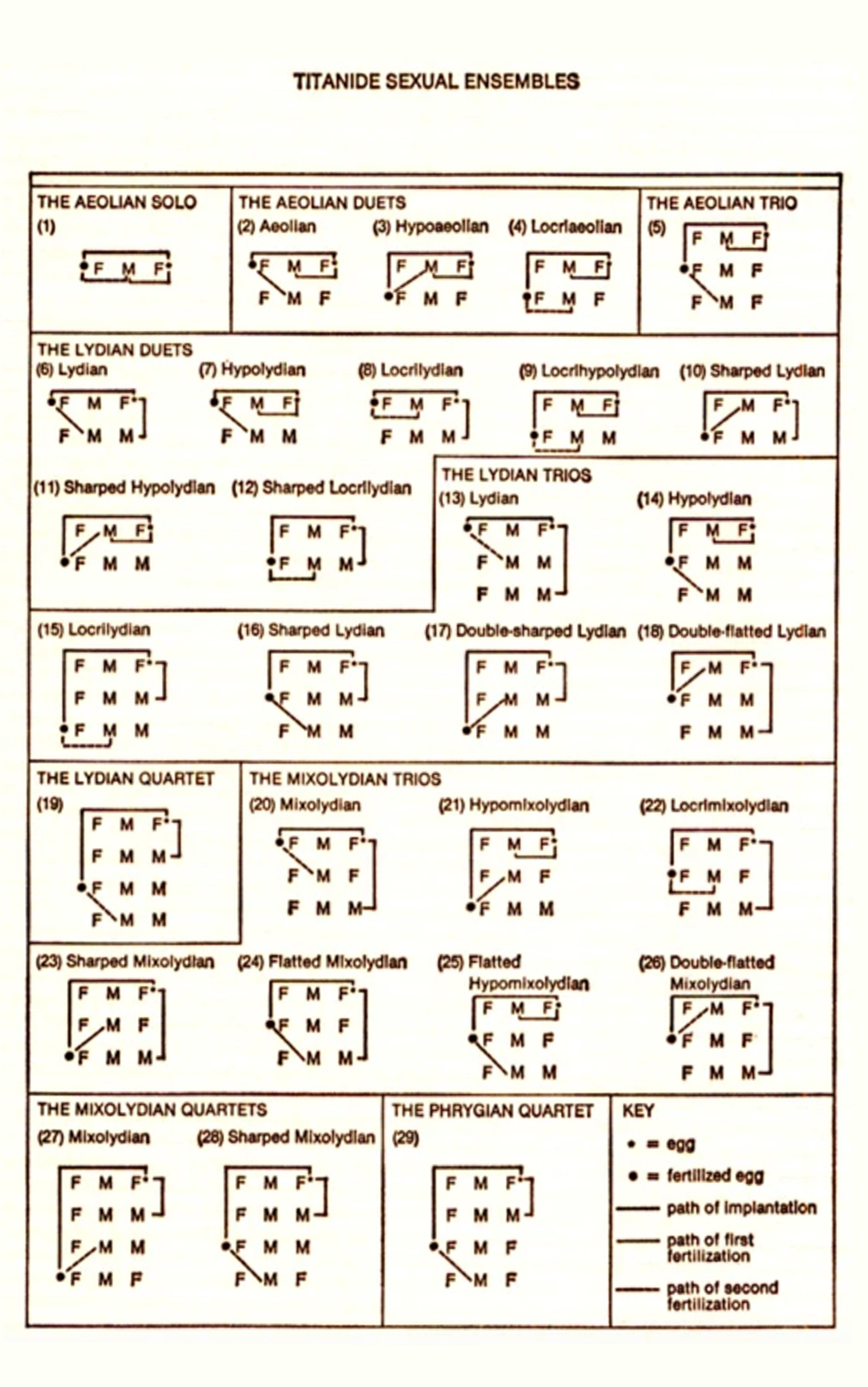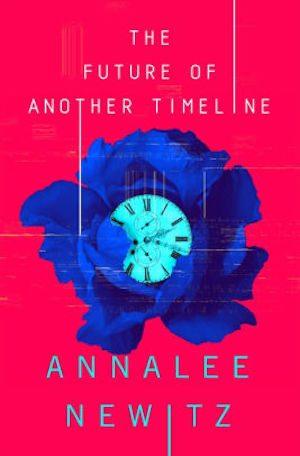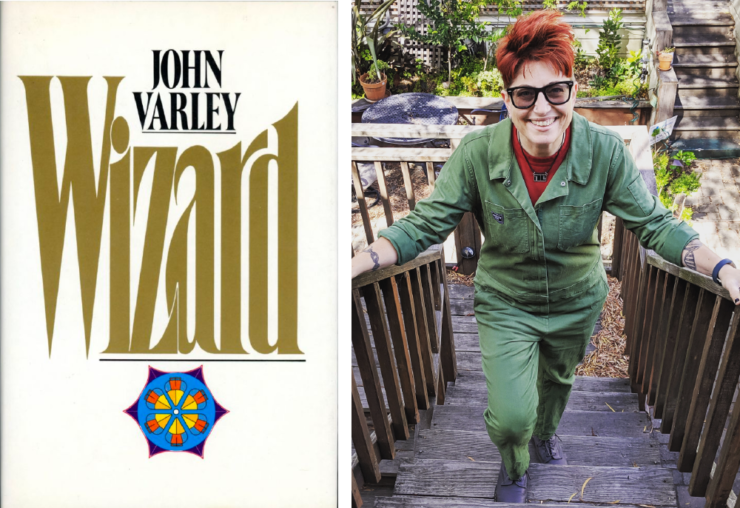I was fifteen when a good friend loaned me his battered copy of John Varley’s novel Wizard. At that point in my life, I was the only girl running with an all-male group of nerds who were obsessed with computers and science fiction. Because my friends were mostly guys, I’d started to wonder if there was something kind of weird about my gender, and maybe my sexuality too. But I wasn’t sure what that meant.
And then I leafed through Wizard. In the section after the title page, where fantasy novels have maps, Varley had a complicated chart of all the sexual positions possible for his aliens, the Titanides, who possessed three sets of genitals. Every year, the Titanides competed for the best sexual positions, and the winners were allowed to reproduce. As I looked over the little boxes full of circles and arrows indicating group sex, solo sex, gay sex, and whatever-the-hell sex, I felt seen for the first time.

The people in this book could be anything–any gender, any sexual configuration. And they didn’t reproduce unless they really, really wanted to. Plus, did I mention that they were all centaurs, created by a benevolent AI who was also a gigantic artificial ecosystem in orbit around Saturn? Yeah. So that was cool.
Around that same time, I also started to get interested in science books written for adults. Basically I wanted the factual version of what I’d gotten out of Varley’s alien sex space opera. At a local mall bookstore, I discovered Alfred Kinsey’s Sexual Behavior in the Human Male, Sheri Hite’s The Hite Report: A Nationwide Study of Female Sexuality, and of course Nancy Friday’s books of sexual fantasies, My Secret Garden, helpfully organized into an elaborate taxonomy of fetishes, orientations, and genders. I was especially fond of the detailed subcategories in all these books, which reminded me of that chart from Wizard. They turned sexuality into an ordinary part of human life that we could study, as opposed to some obfuscated blob of moral imperatives.
The more I read, the more I was reassured that humans were like Varley’s Titanides, with hundreds preferences that changed all the time. In the long lists of sexual types, subtypes, and paratypes, I saw myself and my friends. I understood, for the first time, that sexuality could be described with zillions of options instead of just one or two. These options were shaped by people’s cultures and racial backgrounds, too. Humans have many identities that overlap. I tried a lot of different options, figuring out what fit for me.
As I grew older, however, I realized that there was a dark side to all this labeling and scientific rationalization of sex and gender. These categories could be used to stigmatize us, to deny us jobs and separate us from our families. Some doctors call minority desires “mental illnesses;” many queers and kinky people have been institutionalized to “cure” them of their preferences. Various forms of romance have been acknowledged, only to be forbidden. In the US, interracial and queer marriage were illegal within living memory, and marriage to more than one person is still unlawful.
Being seen isn’t the same thing as being set free.
Buy the Book


The Future of Another Timeline
Which brings me back to science fiction. Like most people whose identities don’t fit neatly into one of the half-dozen widely accepted categories, I spend an inordinate amount of time trying to fit in. I flatten my gills against my neck, tuck in my tail, and try not to reveal my metal endoskeleton in public. I worry that someone will decide to snip off my antennas to “teach me a lesson.” It’s easier to describe this in the language of science fiction; I can reveal my truth, but dodge the world’s dangerous judgment.
That’s why I find myself drawn to stories about identity that are so complex they require spreadsheets. In work by people like JY Yang, Rivers Solomon, RB Lemberg, NK Jemisin, and Becky Chambers, I see glimmers of worlds where people find love that defies easy categorization. I write those stories, too. But my pleasure is always tempered by the knowledge that there’s a difference between the taxonomies we draw up for ourselves, and the ones that hostile outsiders make to contain us. I fell in love with Varley’s Titanide sex chart long ago because it was a map of possible pleasures, made to light the way for others who aren’t sure where love might be found. Too often, though, politicians, moralists, and scientists name us in order to identify abominations whose lives must be ended.
My point is that I need science fiction to survive. It gets exhausting making myself legible to people who didn’t read the scientific tomes and appendices full of data necessary to understand the choices I’ve made. But in the mutant palace of science fiction, I describe myself and the space I inhabit. One day, maybe, the identities we choose for ourselves will not be used against us. Until then, I will see you in my imaginary democracy, full of living beings you can barely imagine, each contributing care and love to the best of their ability.
Annalee Newitz is an American journalist, editor, and author of fiction and nonfiction. They are the recipient of a Knight Science Journalism Fellowship from MIT, and have written for Popular Science, The New Yorker, and the Washington Post. They founded the science fiction website io9 and served as Editor-in-Chief from 2008–2015, and then became Editor-in-Chief at Gizmodo and Tech Culture Editor at Ars Technica. Their book Scatter, Adapt, and Remember: How Humans Will Survive a Mass Extinction was nominated for the LA Times Book Prize in science. Their first novel, Autonomous, won a Lambda award, and their latest book The Future of Another Timeline is available now from Tor Books.










